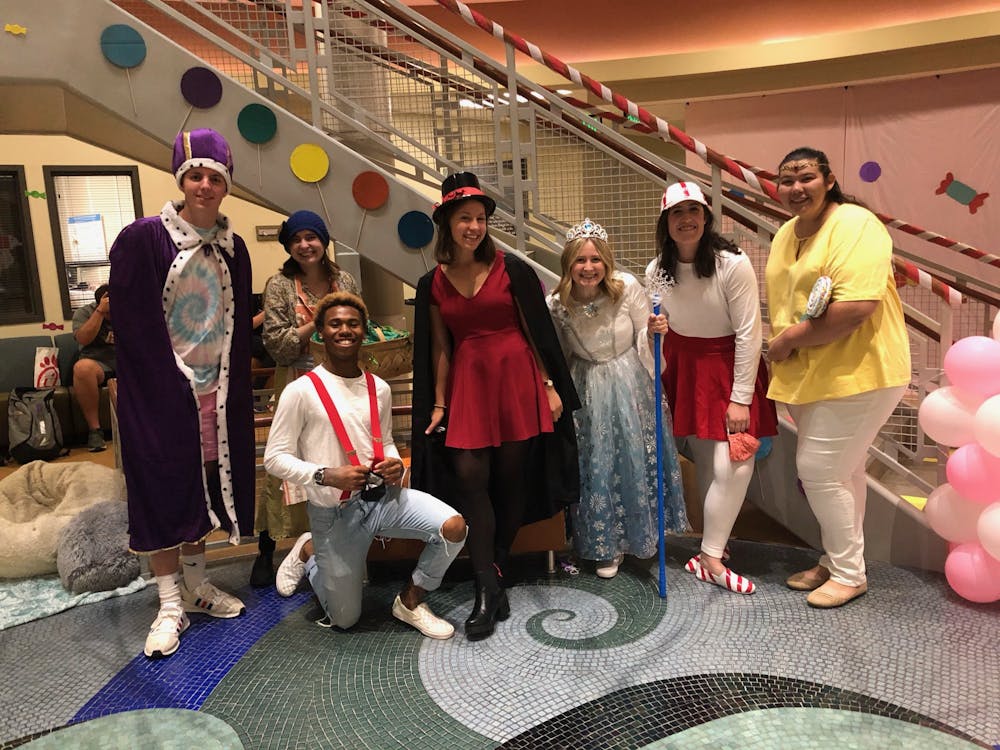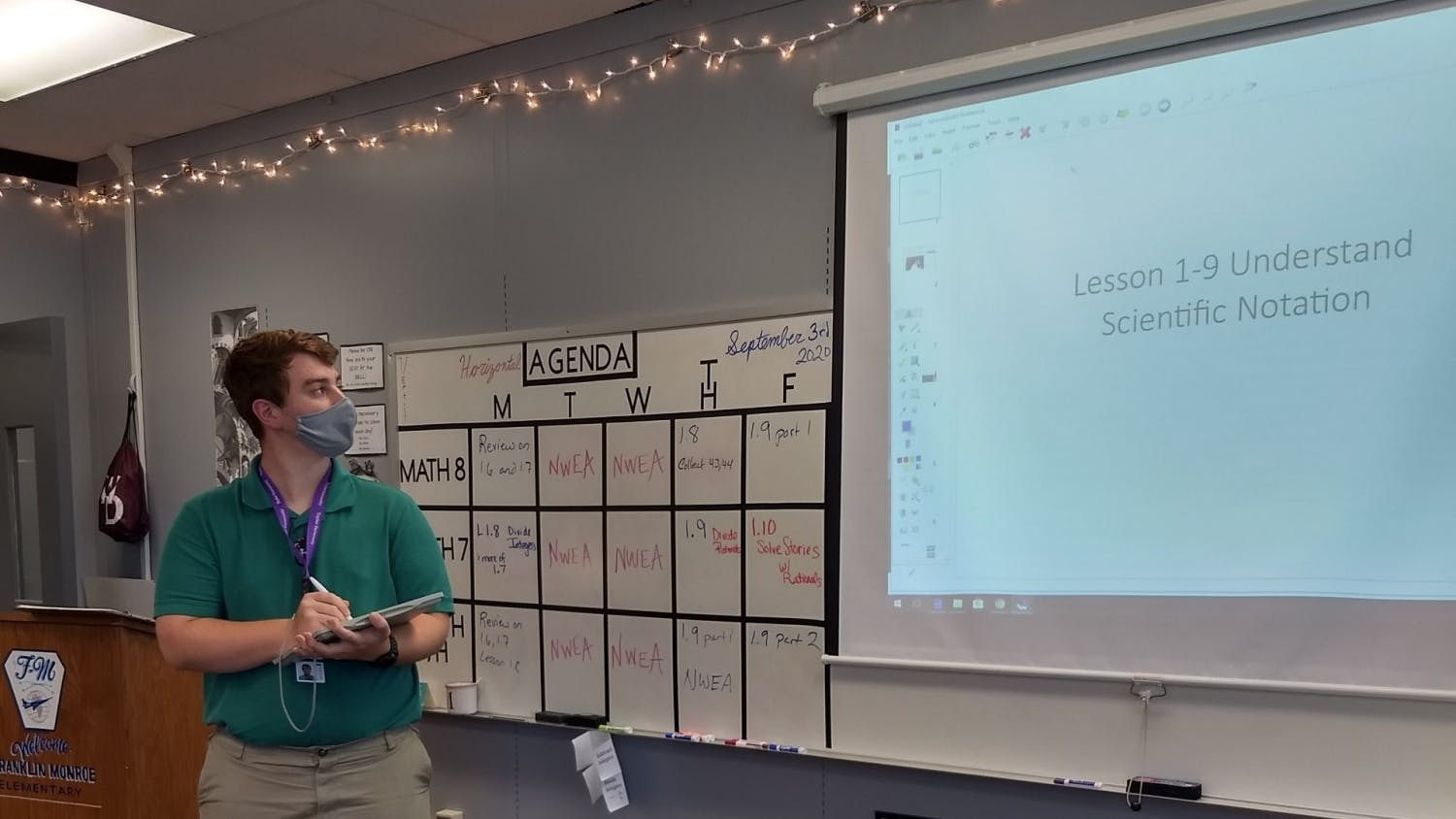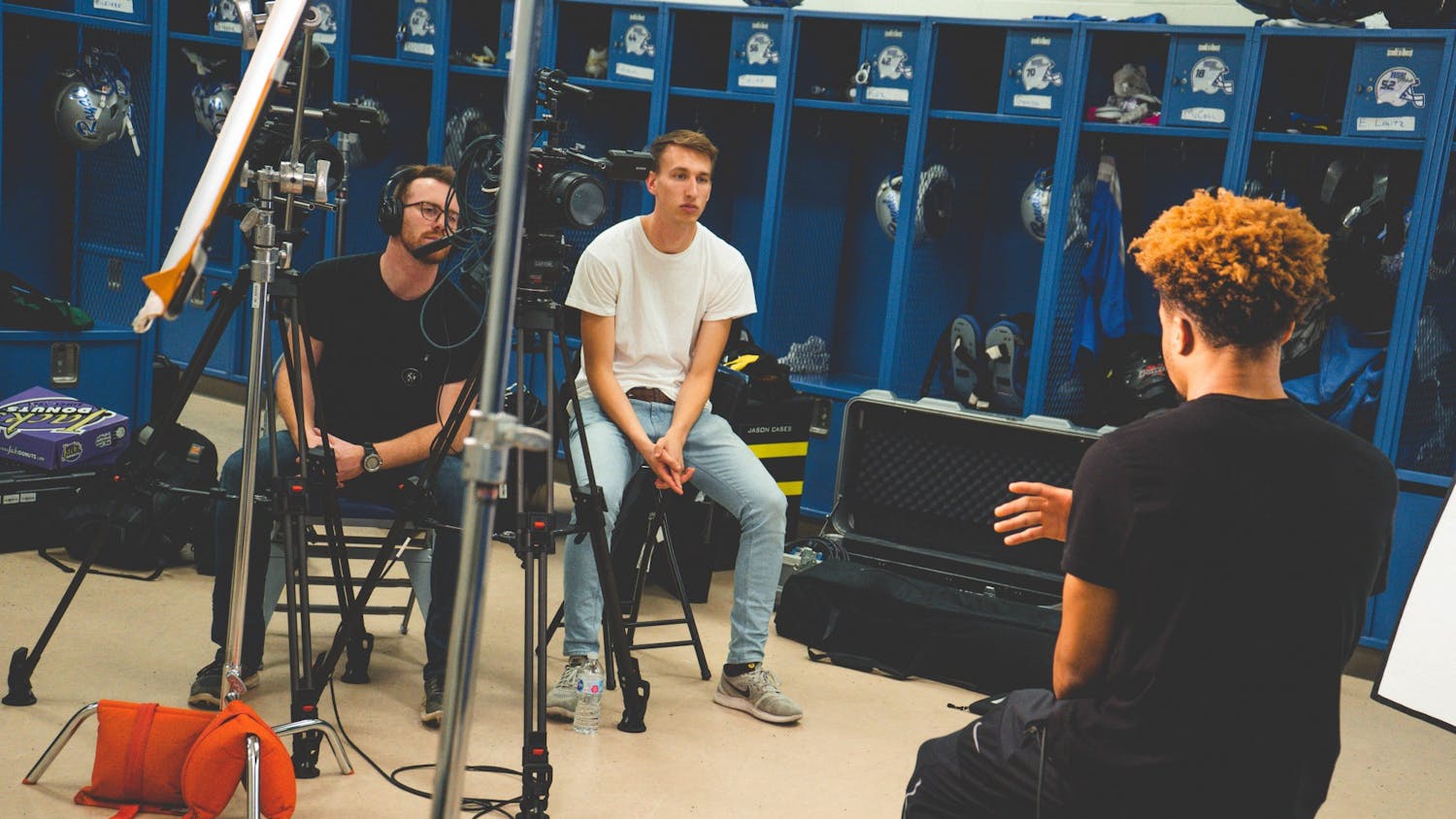Acting like a kindergartener is not what most sophomore elementary education majors had on their minds when they started their early childhood education class this semester. But acting like kindergarteners is what some of them had to do.
As part of their curriculum, elementary education sophomores take a 200 level education class where one of the biggest focuses is planning, setting up and teaching several class periods to kindergarteners.
Normally, this means a month or more of preparation, hours of decoration, then engaging with groups of willing kindergarteners that come in to give the students a realistic audience.
This year, however, their classmates had to play the part while the real kindergartners stayed at home to prevent the spread of COVID-19.
Although being able to teach real kindergarteners is one of the highlights of the project most years, sophomore Lydia May wasn’t too concerned about not having them.
“I don’t think it’ll really matter,” May said. “And also, it’s just fun to play teacher.”
Cindy Tyner, a professor of education who teaches this class was happy with this year’s projects, even though the students couldn’t teach real kindergarteners.
Tyner has been teaching the class for 20 years, and one of the main points, with or without COVID-19 restrictions, is that the students get experience making lesson plans and preparing a classroom. These things would have happened even if Tyner had to totally cancel the final teaching portion of the project.
“And their senior year they point back to, ‘this got me ready for student teaching,’ because I know how much hard work it is, how much time and effort it takes,” Tyner said.
While the decorations are a big factor that everyone gets to see walking by, much of the students’ work happens in the month or so before as they decide on the theme of their classroom and what lessons they will teach.
Students normally prepare four lessons and present three, but because of COVID-19, they only had to present two lessons this year: one from math or language arts, then a choice of art, music, physical education or something similar.
“Because of COVID, it was a shorter time period because we had two groups going a night, rather than one group a night,” sophomore Dani Decker said. “So, we only had to choose two lessons, so we chose language arts and art.”
Normally people from students’ halls and other friends and family can come watch the lessons being taught, but just like the kindergartners, they cannot come because of COVID. The only audience that can be this year is the other students in the class.
Lessons are difficult to plan because they have to keep the kids engaged and learning the whole time.
This is the point of all the decorations that are set up. The decorations keep the kids entertained, but can also be used to teach things.
“The key thing with early childhood education is play is a child’s work,” Tyner said. “You’re learning a lot, but you do it by activity.”
Even though it is just two lessons, the preparation began months out. At the beginning of the semester, Tyner counted the students into groups of seven or so students and they were free to begin planning their project.
They are given a group of pages containing information to use and sheets to fill out in the process of making a lesson plan. They turn this in at the end of the project for a large part of the grade.
Decker said that her group followed the advice of students who had been through the class before and immediately started meeting twice a week. In the last few weeks before they presented though, they hit the project hard, working about five hours a day, finishing up the planning, and getting the decorations set up.
As a result of all this time spent together the groups grow very close.
Though this is Tyner’s last year of teaching, and she is unknown whether the project will continue, she said that she is very glad to have been able to run this project.
“You could call them a group, but I call it teams, because a team means you are going to work together” Tyner said. “The part I love the most is to watch these teams come together and become friends, because they are going to be in the same classes in the education department throughout their four year career.”





